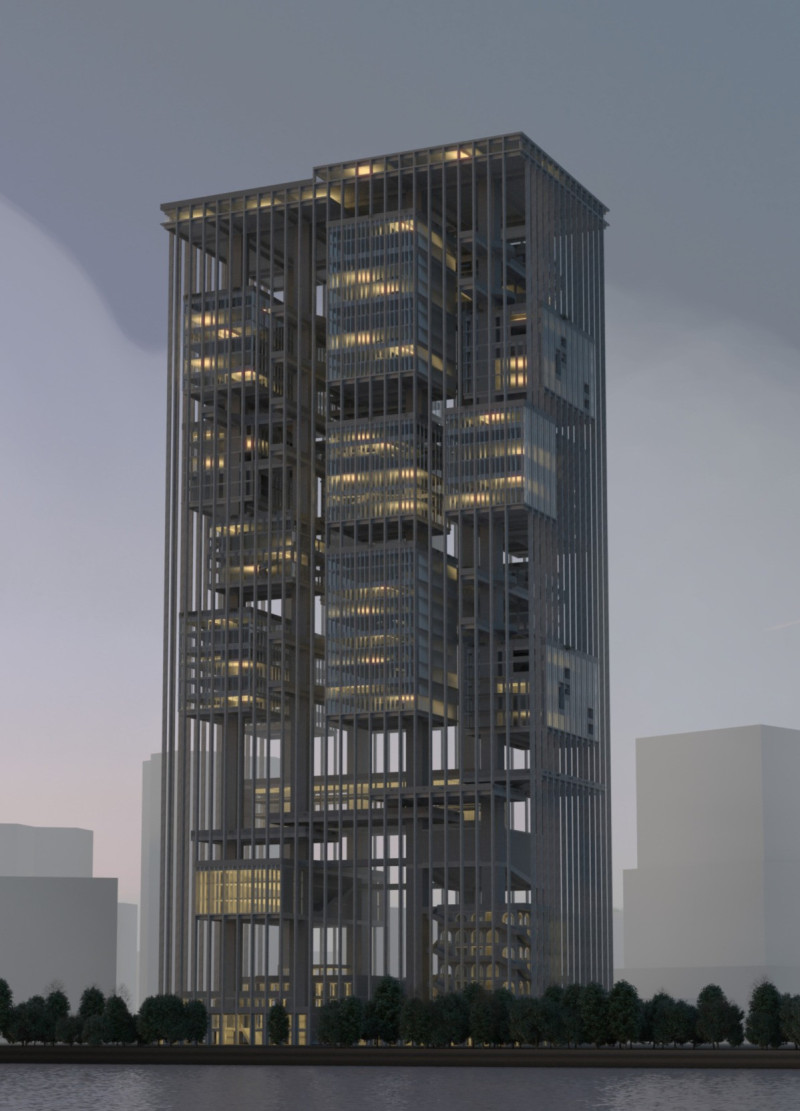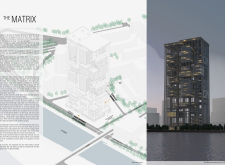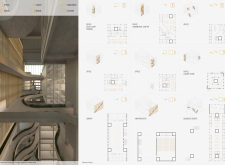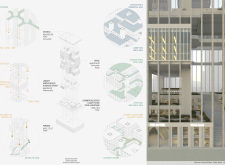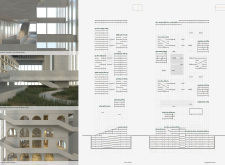5 key facts about this project
A key aspect of The Matrix is its approach to circulation and interaction. The design includes a redefined staircase system categorized into continuity, progressive enhancement, and diversity. This innovative framework addresses conventional limitations of office building circulation. By creating open lines of movement, the architectural design fosters spontaneous interactions among users while enhancing the overall functionality of the office spaces.
Unique Design Approaches
The Matrix distinguishes itself through its emphasis on modular office layouts that encourage personalization and adaptability. This flexibility allows different departments to modify their spaces according to specific operational needs. Additionally, the integration of indoor and outdoor spaces through terraces and green areas promotes a healthy work environment that connects users with nature.
The building's facade utilizes a combination of concrete, glass, steel, and wood, resulting in a visually appealing and durable structure. The use of generous glazing promotes natural light, contributing to energy efficiency and user comfort. The architectural design factors in environmental sustainability, with features designed to improve air quality and reduce energy consumption.
Spatial Configuration and Community Integration
The Matrix also integrates community-oriented spaces, such as a commercial center, library, and amphitheater. These public areas enhance the building's role as a social hub in the urban fabric of Boulogne-Billancourt. By placing emphasis on communal engagement, the project fosters connections not only among office workers but also with local residents.
The thoughtful integration of various spaces, user flexibility, and sustainable design principles position The Matrix as a forward-thinking architectural response to the evolving needs of modern workplaces. For those interested in exploring the details of this project, including architectural plans, sections, and specific design elements, further investigation into the project presentation is encouraged.


